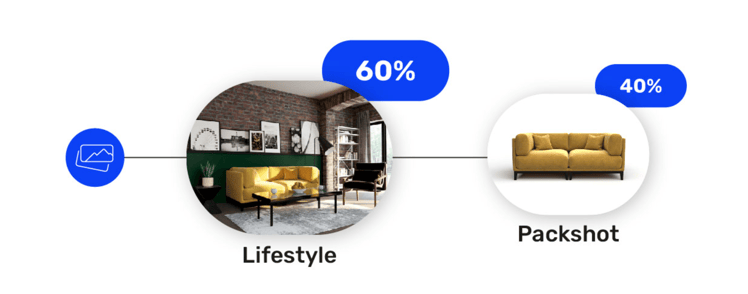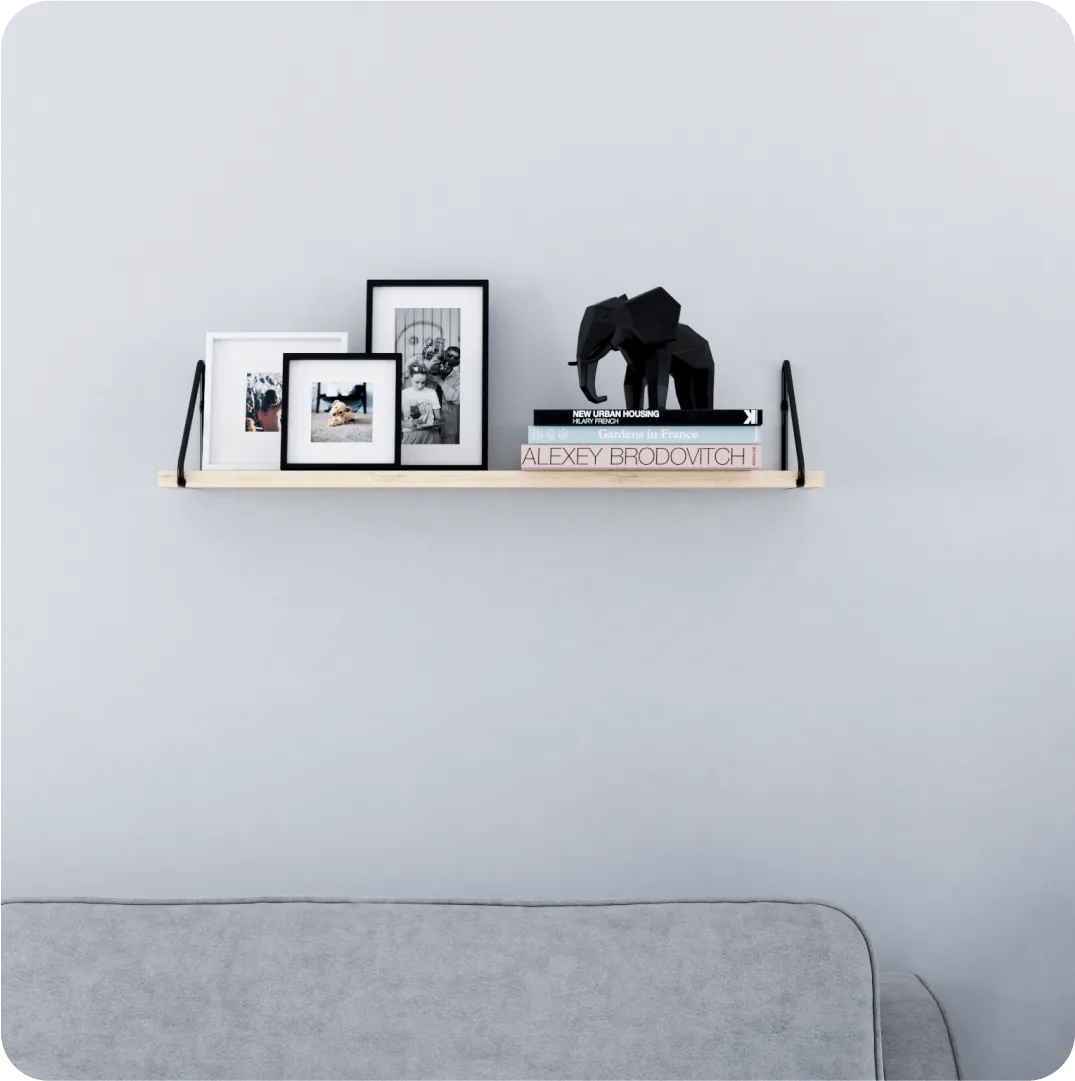Key e-commerce trends in 2023 and beyond
-2%20(1).jpg)
Even before Covid, Nasdaq forecasted that by 2040, around 95% of all purchases will be e-commerce. With the pandemic accelerating this growth (10 years growth in under three months, according to McKinsey), that date has surely been brought forward.
Here at Nfinite, we keep a close eye on the current and upcoming behavior of both corporations and consumers when it comes to retail. Let’s take a look at the trends we believe will grow in 2023 for shoppers and retailers.
Consumers demand more immersive experiences
While browsing online, consumers can’t touch or manipulate the products they are interested in. Retailers who leverage tools to give consumers a detailed understanding of the items are a step ahead when it comes to winning trust and converting interest into purchases. According to PwC, consumers are willing to pay up to 16% more for a good customer experience.
Trend #1: Consumer expectations for high-quality product images are rising
In our recent Shopper sentiment survey, 88% of consumers say high-quality product imagery is important when making an online purchase. 31% are deterred from purchasing a product online if it’s accompanied by low-quality product visuals and lack of compelling visuals. This trend is even more dramatic for younger shoppers, with Gen Z having higher expectations for product visuals than the general population. As Gen Z’s purchasing power rises, retailers who prepare now will be poised for success.
Those who get on board are also more likely to gain consumer trust, with 77% saying product image capabilities improve their confidence in making a purchasing decision on a website they’ve never purchased from before.

Trend #2: Consumers are gravitating toward products shown in context
When the average person is exposed to thousands of ads a day, fighting for their attention is more important than ever. Website visitors tend not to stay on a site for more than 15 seconds. With such a short window to grab their attention, how retailers display products matters. Our data shows that 60% of consumers said a lifestyle image was more likely than a packshot to capture their attention when shopping online. When looking at the generational gap, 25% of Gen Z says high-quality lifestyle images improve their confidence in making a purchase compared to only 7% of Baby Boomers.
Context-rich images not only grab shoppers’ attention but help enhance the authenticity of the brand through aspiration. A plain product image doesn’t offer much, but a shot with a rich background tells a story and enables shoppers to immerse themselves in the experience.

Trend #3: Visual search is continuing to gain traction among young shoppers
“Why use text search when the search process requires only a quick snap of the camera on a smartphone?” is a question running through some consumers’ minds. More than 36% of online shoppers say they have used visual search and more than half deem visual information more useful than text information.
Many of the largest players in tech — Google, Pinterest, Instagram, Amazon, and Microsoft — have already added this feature and are promoting it with fervor. It’s easy to understand why, when 62% of Millennials and Gen Z want visual search capabilities more than any other search technology. The visual search market is set to double in size between 2018 and 2025.
This trend toward visual search will necessitate brands creating a very rich inventory of product images to match the search patterns of next-gen shoppers.
Retailers eye new technologies to address new trends
As consumer behaviors and expectations change, retailers are looking at technological innovation to meet future demand. We recently released an independent research report in partnership with Dimensional Research which addressed the challenges retail executives are facing and how they are dealing with them. One thing became clear — product imagery and visualization is the top area of investment in 2023.
Trend #4: Retailers executives see clear value in better imagery
91% of retail executives agree that product imagery has a positive impact across e-commerce performance metrics. With this in mind, 86% want to increase their use of lifestyle or contextual background images in order to grab the attention of shoppers.
How do they plan to accomplish this? 87% of retailers say CGI and 3D image creation are necessary technologies for their product visualization strategy.

Trend #5: Retailers believe AR will significantly increase engagement and conversion
We all know that Augmented Reality helps improve customer experience and personalization in the online retail space. In fact, the use of AR boosts engagement rates by nearly 20% and conversion rates by 90%. And our own data shows that 42% of Gen Z is more likely to make a purchase when there is an AR option.
AR enables consumers to examine products, giving them the sensation and experience of being in a physical store.
Trend #6: Retailers are starting to tackle the product return problem
Finding new ways to reduce return rates is becoming both a financial and reputational problem. It’s estimated that a $50 returned item will cost an average of $33 (66% of its price) to process in 2021, up from 59% in 2020. With a return rate of one in every four products, the total cost can be staggering.
In addition to the high costs, a big portion of the returned items are not reprocessed back to inventory because it is simply too costly. These products end up being dumped, creating five billion pounds of landfill waste per year in the U.S. alone. This equates to 15 million metric tons of carbon dioxide released into the atmosphere.
Some retailers are investing in technologies such as AR and virtual fitting softwares that help consumers visualize digital clothes to try before they buy. Others are allowing customers to enter their measurements or even measure themselves using their phones to ensure the proper fit. Using these tools, some brands have been able to reduce their return rates by 30% to 60%.
For non-apparel-related products, Shopify found that merchants who use 3D AR visualization strategies have seen a 40% reduction in returns since implementing the technology. And 66% of shoppers who use AR are less likely to return their purchases.
These next-generation tools are allowing retailers to give shoppers a better understanding of what they are purchasing. Providing detail, whether it’s in the form of imagery or sizing measurements, is reducing returns. And it’s all enabled by innovative tech.
Nfinite can help with context-rich images at scale and many more imagery capabilities so retailers can easily adjust their merchandising strategies to meet the latest trends.
Learn more about how we work.
Insights in your inbox
Key e-commerce trends in 2023 and beyond
%20(418%20%C3%97%20251%20px)%20(3).png)
Q2 2023
Dynamic Display
With Dynamic Display, shoppers easily mix and match multiple products in real-time — and shop directly from the experience. Retailers can seamlessly embed this on their websites and apps, showcasing these shoppable showrooms wherever they do business online.
Search and tag visuals
Users can now search visuals on the platform! Instead of scrolling through visuals or looking up product or template details, users can easily find visuals using keywords and filters. Filters include visual type, products, organizations, creators, status, and creation date. And now, with the ability to tag visuals, users can also search by tag.
Advanced template search takes this a step further. When users begin creating a visual by selecting a product, in addition to seeing all compatible templates, they can now search for specific templates using a variety of filters, including categories, ratios, tags, and more.
%20(2).png)
Enhanced scene creation
Our redesigned scene editor offers a more immersive editing canvas while providing a simpler, easy-to-learn, and more intuitive UI. Users can swap products, repaint walls — and ultimately create scenes — faster than ever.
Vastly improved swap diversity
We've rebuilt how product swaps work to allow users to browse and swap any product with the accurate geometry. Gone are the limitations of a single or select group of product categories, enabling users to leverage their creativity by quickly transforming a bedroom into a home office or a garage into a home gym.
Preview Visuals Within Email Notifications
Each email notifying you about a new packshot, 360, or lifestyle will include a beautiful preview image helping you maintain context and make more informed decisions.
.png)
Control Your 360° spins
Customize your 360° spins by editing the duration, manipulating the zoom, or changing the camera angle to your exact specifications.
Want to get a full tour of the product? Request a demo today!
Insights in your inbox
Stay up to date









.png)
.png)